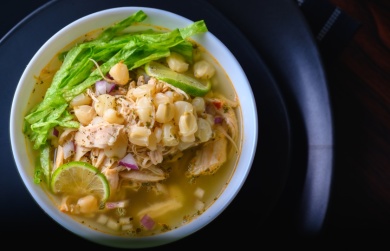Can I Add Fiber Powder to My Chicken? Benefits and Tips

"Want to enjoy eating chicken legs but also afraid of not getting enough fiber?" When crispy fried chicken and healthy fiber are split into opposing options, a bold question emerges: Can I add fiber powder to my chicken?
Can fiber powder be added to chicken?
Yes, but it needs to be done scientifically.
Fiber powder is usually made from natural plant fiber extracts (such as psyllium husk, pectin, or papaya fiber, etc.). It can be incorporated into chicken to improve the texture or increase the nutritional density.
It is a good way to increase the dietary fiber content, which helps to improve digestive system health and promote intestinal peristalsis.
Precautions:
Addition ratio: It is recommended to control it within 1 - 3% of the weight of the chicken. Excessive addition may cause the meat to be loose or the texture to be rough.
Type of fiber: Prefer odorless, water-soluble fiber to avoid masking the original flavor of the chicken.
Food safety: Ensure that the fiber powder is food-grade.

How to add fiber to chicken?
Pre-treatment stage:
Marinating and infiltration: Mix the fiber powder with water/seasonings into a paste and smear it on the surface of the chicken for marinating for more than 2 hours.
Injection method: Use a syringe to inject the solution containing fiber powder into the chicken (suitable for thick-cut parts such as chicken breast).
Cooking stage:
Coating and frying: Mix the fiber powder and starch in a ratio of 1:4 as a low oil-absorbing coating for the outer layer of fried chicken.
Baking/roasting: The fiber powder can replace 5% of the breadcrumbs to increase the fiber content and reduce carbohydrate intake.
Can you add fiber powder to cooking?
Yes. Here are the methods of adding fiber powder for different cooking methods:
1. In soups and stews:
Just add a small amount (usually 1 - 2 teaspoons) during simmering. It will mix well without changing the texture.
2. In baked goods:
You can add fiber powder to baked goods such as muffins, bread, or cookies. Just replace part of the flour with fiber powder (start with 1 tablespoon per cup of flour) to increase the fiber content without overly affecting the texture.
Tip: When baking, you may need to adjust the moisture content in the recipe because fiber powder can absorb liquid.
3. In meat dishes (such as meatballs or meatloaf):
When making meatballs, burgers, or meatloaf, you can mix the fiber powder into the minced meat. It adds fiber and can also act as a binder.
Tip: One tablespoon of fiber powder can be used for about one pound of meat.
4. In pancakes:
Add fiber powder to the pancake batter to increase the fiber content. Again, start with 1 - 2 tablespoons per batch.
Tip: You may need to add extra liquid to keep the batter smooth.
5. In rice or grain dishes:
After cooking, you can stir the fiber powder into the rice, quinoa, or couscous, or mix it into the cooking water before cooking the grains.
6. In sauces or condiments:
You can also add fiber powder to homemade salad dressings, dips, or gravies to increase the fiber content without affecting the taste. Just sprinkle a small amount when whisking the sauce or condiment.
Key points to remember:
Start slowly: If you add too much fiber too quickly, it may cause digestive discomfort. So it's important to start with a small amount and gradually increase the intake.
Stay hydrated: Always drink plenty of water when consuming fiber, as it works best when well-hydrated.
Balance: Fiber powder cannot replace fiber from whole food sources (such as fruits, vegetables, legumes, and whole grains), but it can be a beneficial supplement.

Can you mix fiber powder with food?
Of course!
Adding fiber to food is an easy way to improve your diet.
Besides chicken, you can increase the fiber content of many dishes.
For example, sprinkle fiber powder on salads, mix it into vegetable dishes, or add it to homemade sauces and dips.
You can also add high-fiber ingredients to your meals, such as beans, lentils, whole grains, and vegetables.
Foods rich in fiber not only promote digestive health but also keep you feeling full for longer, which helps with weight control.
What does fiber powder do?
1.Promote digestion: Fiber helps with regular bowel movements and prevents constipation.
2.Improve gut health: It supports the growth of beneficial bacteria in the gut.
3.Manage blood sugar: Fiber can help regulate blood sugar levels by slowing down the absorption of sugar.
4.Support weight management: It can help you feel full for longer, thus reducing overall calorie intake.
5.Lower cholesterol: Soluble fiber can help lower LDL (bad) cholesterol levels.
Is it OK to add fiber to food?
Yes. The modern dietary value of dietary fiber:
Necessity: The WHO recommends that adults consume 25 - 30 grams of dietary fiber per day, but there is generally a shortfall in modern diets.
Addition strategies:
Hidden addition: Mix fiber powder into baked goods, drinks, and meat products without affecting your original eating habits.
Functional substitution: Replace some refined carbohydrates with fiber powder (such as using oat fiber to replace 10% of the flour).
Risk warning: Excessive intake (more than 50 grams per day) may cause bloating or hinder mineral absorption.























